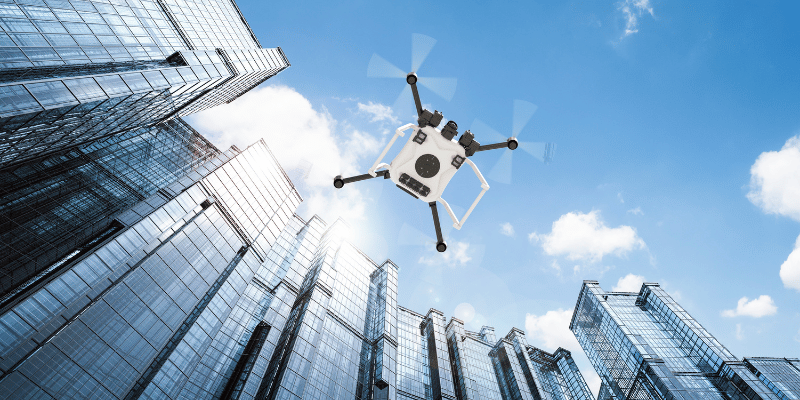Smart Infrastructure Inspection Using Aerial Imaging
Civil infrastructure like roadways, bridges, tunnels, pipelines, transmission towers, residential and commercial buildings require continuous monitoring to ensure structural integrity. With aging infrastructure in advanced geographies like US, Europe and Japan, the governments are securing multibillion-dollar funds towards asset management and repairs. A large chunk of the US Infrastructure Bill of $1.2 trillion is apportioned for maintenance of infrastructure.
When it comes to technology, over the past few decades, the use of sensors and sensing systems for infrastructure asset management has increased considerably. With the growing use of computer vision sensing systems in the next few years, we will see higher levels of efficiency and returns on investment. Non-contact based sensors like camera and thermal sensors mounted on aerial vehicles like drones are eliminating the need for surveyors having to physically be present for inspection. However, in most cases, trained inspectors are still required to manually check the captured data.
With the advent of AI and deep learning-based sensing systems, there is a good opportunity to build vision inspection solutions that can ingest huge amounts of video data, do the analysis, and provide detailed reports. Data processing can happen real time at the edge (for example, AI HW on the drone) or offline (either on-premise or cloud servers) or in a hybrid mode. In a hybrid mode, the edge device would handle basic analysis (for example, identifying key parts of infrastructure) and send only the relevant data to backend servers for further detailed analysis.
The following section provides an overview of some of the infrastructure inspection solutions that Ignitarium has developed for customers in the past few years, using video data obtained from drones. In all these solutions, the data processing pipeline is similar and can be generalized as shown below:

The ‘Detection Module’ is the key component that is developed using computer vision & deep learning models. The process of developing the detection module is similar across different use cases and can be generalized into the following 2 main steps:
- Dataset preparation: Depending on the deep learning (DL) model that is selected, the amount of training dataset varies. Typically, we will need tens of thousands of images of defective parts to train a DL model. This can be a combination of real and synthetic datasets. The datasets must be labelled (objects/areas of interest to be marked using simple bounding boxes or pixel segmentation) before it can be used for model training.
- Model Training: A suitable DL model is chosen based on the following main parameters:
- Type of defect
- Dataset quantity and quality
- Mode of operation (real time or offline)
- Validation & Refinement: Validation of the model is done using test data as well as real world data. Based on the accuracy and speed performance, we will need to iterate with refinements on both datasets and models. An efficient way to do this is to leverage MLOps techniques, where tools & frameworks are used to allow fast turnaround time and proper tracking of dataset & model versions.
The below illustrates a few of the solutions developed by Ignitarium:



You may refer to the following articles for an indepth look at each of our deployments:
https://ignitarium.webindia.comdeep-learning-based-defect-detection-in-telecom-towers/
https://ignitarium.webindia.comdeep-learning-based-wall-crack-detection/
https://ignitarium.webindia.comsolar-panel-defect-detection-using-ai-techniques/
Ignitarium has been working in the domain of civil infrastructure maintenance using both terrestrial and aerial image analysis. With our expertise in sensor data analysis and advanced computer vision techniques, we can provide state-of-the art inspection software that can be integrated into visual sensing systems.
With successful engagements with US railroad maintenance ecosystem and active discussions with customers on inspection of mobile towers, wind turbines and more, Ignitarium is looking to bring in higher levels of automation in infrastructure inspection solutions, thereby increasing RoI for our clients. Do reach out to Ignitarium (info@ignitarium) if you want to discuss your infrastructure inspection solution development needs.























